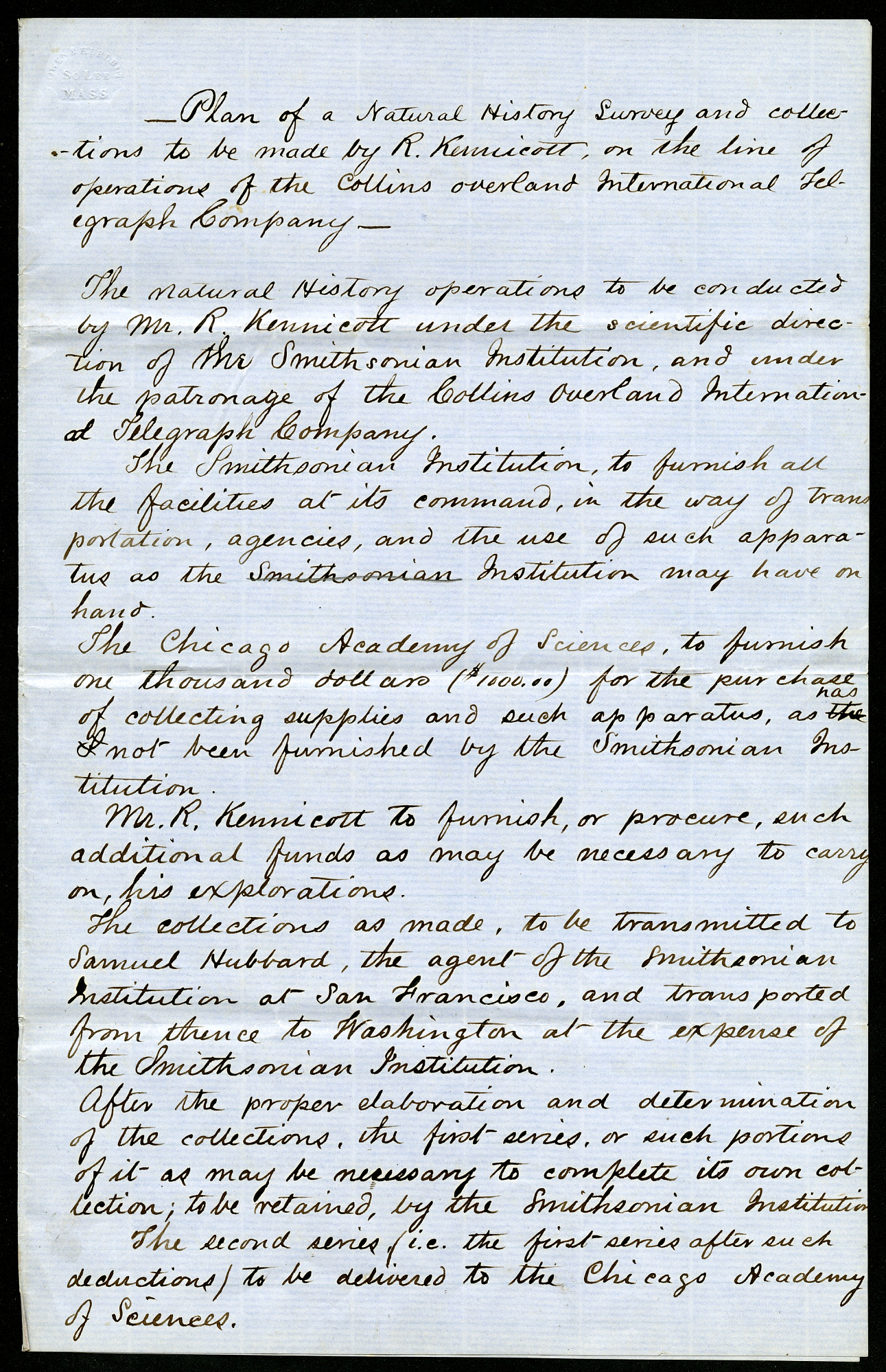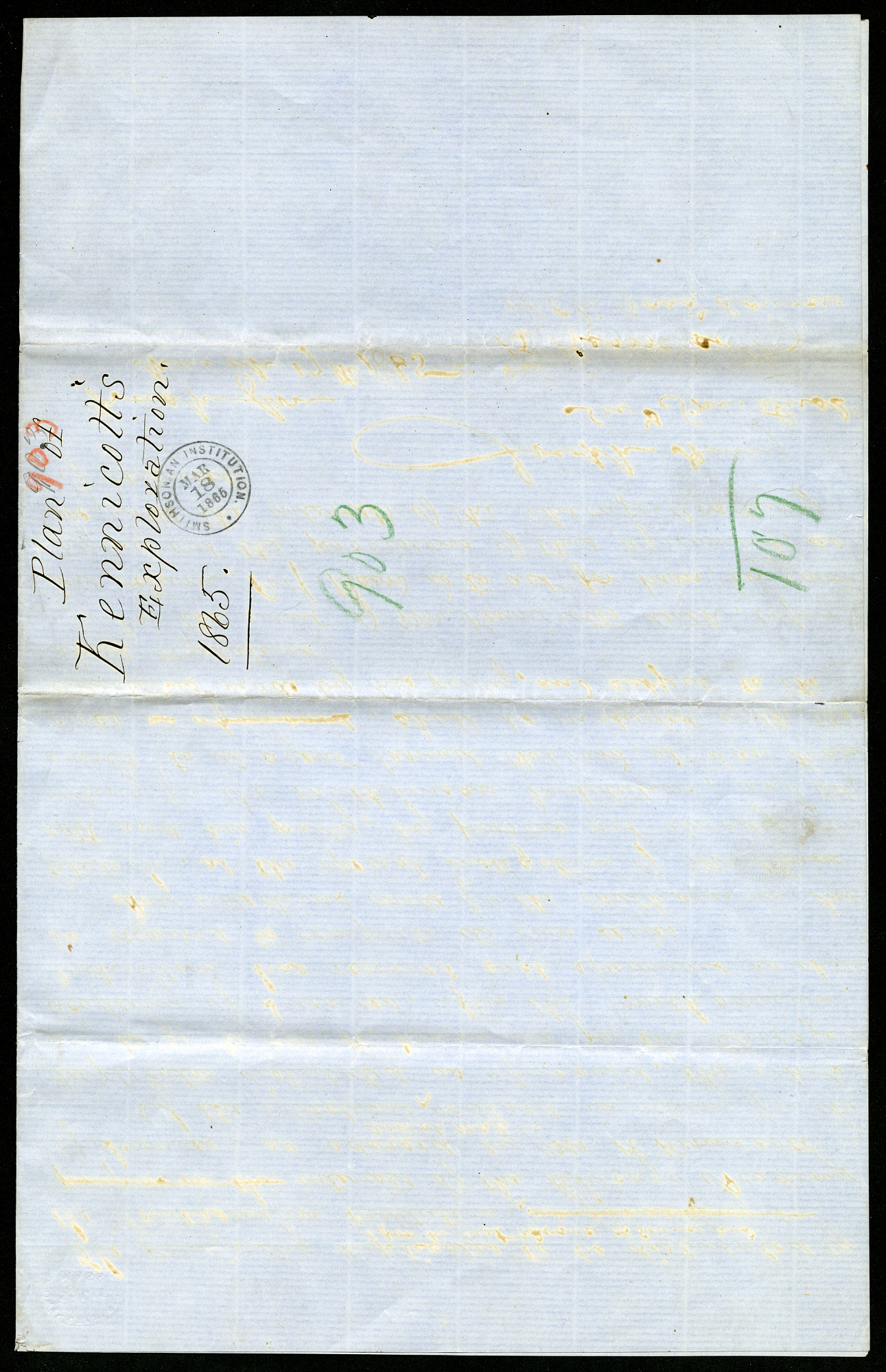
Some Background:
In early August, Washington Post writer Sarah Kaplan contacted the Smithsonian Archives to use an image of the Megatherium Club. Kaplan’s article details the quest to solve the mystery surrounding the death of Robert Kennicott--Megatherium Club member, explorer, and founder of the Chicago Academy of Sciences.
Kennicott died in 1866, at the age of 30, while on the Western Union Telegraph Expedition. One theory that persisted about his early death was that he committed suicide (spoiler alert: he did not). Kaplan’s feature in the Post follows the work of Smithsonian scientists who used forensic evidence and archival documentation to determine the cause of Kennicott’s death. It was Kennicott’s words, and indeed his remains, that solved the mystery (his bones are housed in the National Museum of Natural History).
Cut back to the day the article was published....
I was reviewing and editing some finding aids to collections and found an anomaly in the list for Record Unit 32, so I went into collections storage and opened up the first folder in the first box. I was just checking the dates of records in a folder labeled “Miscellaneous Correspondence.” It was there I found a document titled “Plan of Kennicott’s Exploration, 1865.”

I took a closer look at the document. It is a fairly straightforward plan for a cooperative expedition between two scientific institutions--the Smithsonian and the Chicago Academy of Sciences--but the last paragraph is less common (at least for the kinds of expedition plans most of us have seen the Archives’ collections).
It states, “In the event of Mr. Kennicott’s death, before his return, Prof. [Spencer] Baird is to act for him, in carrying out the provisions of this agreement, as regards the interests of the Chicago Academy of Sciences [emphasis mine].” This was the very expedition during which Kennicott died.
Now, it could have been the colder temperature in our collections storage, but reading that last paragraph, I realized I had goosebumps. I showed the document to our historian and several of our reference staff, and no one recalled seeing the document before. Record Unit 32 is a somewhat odd collection. The provenance for the collection is simply, “These secretarial records apparently were separated from the main series before the latter were bound.” These were papers left on someone’s desk, or in someone’s filing cabinet, and stayed “orphaned” when the early records of the Smithsonian Secretary were assembled and bound. The folder reads, “Miscellaneous Correspondence,” and really the entire collection is comprised of miscellaneous items. The “Plan of Kennicott’s Exploration” was never called out in the finding aid, and no one would have known to look in this collection for such a plan.
I’m not sure I believe in ghosts, but somehow I do believe that Kennicott wanted me to find that document that day.
Related Resources
Record Unit 32, Office of the Secretary, Correspondence, 1843-1887, Smithsonian Institution Archives.
Record Unit 7213, Western Union Telegraph Expedition Collection, 1865-1867, Smithsonian Institution Archives.
Record Unit 7072, Robert Kennicott Papers, 1863-1865, Smithsonian Institution Archives.
This Smithsonian scientist’s death was a mystery; 150 years later, his skeleton helped solve it, Washington Post, August 3, 2016.
Produced by the Smithsonian Institution Archives. For copyright questions, please see the Terms of Use.




Leave a Comment